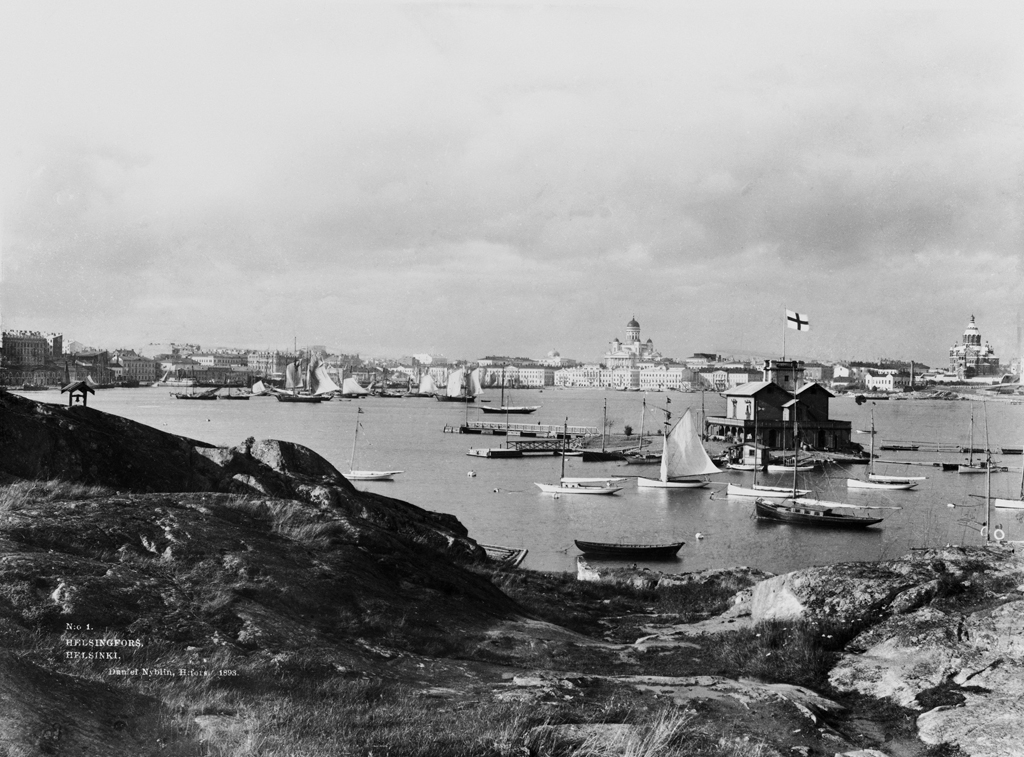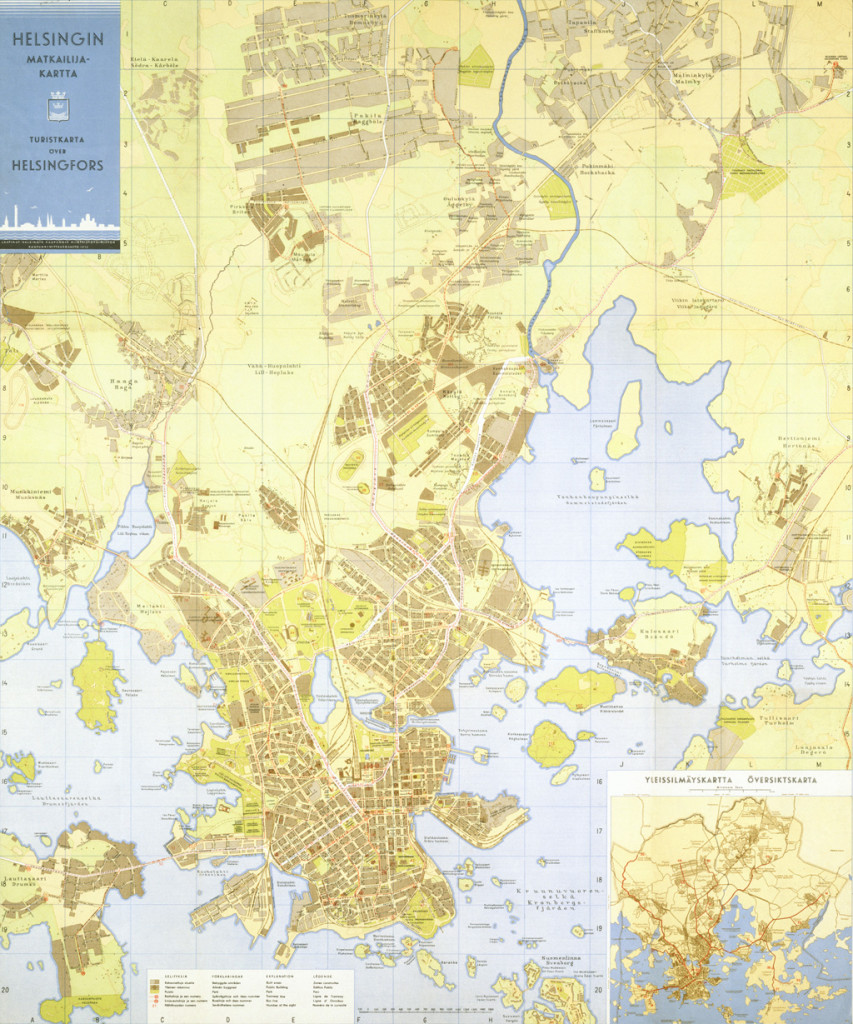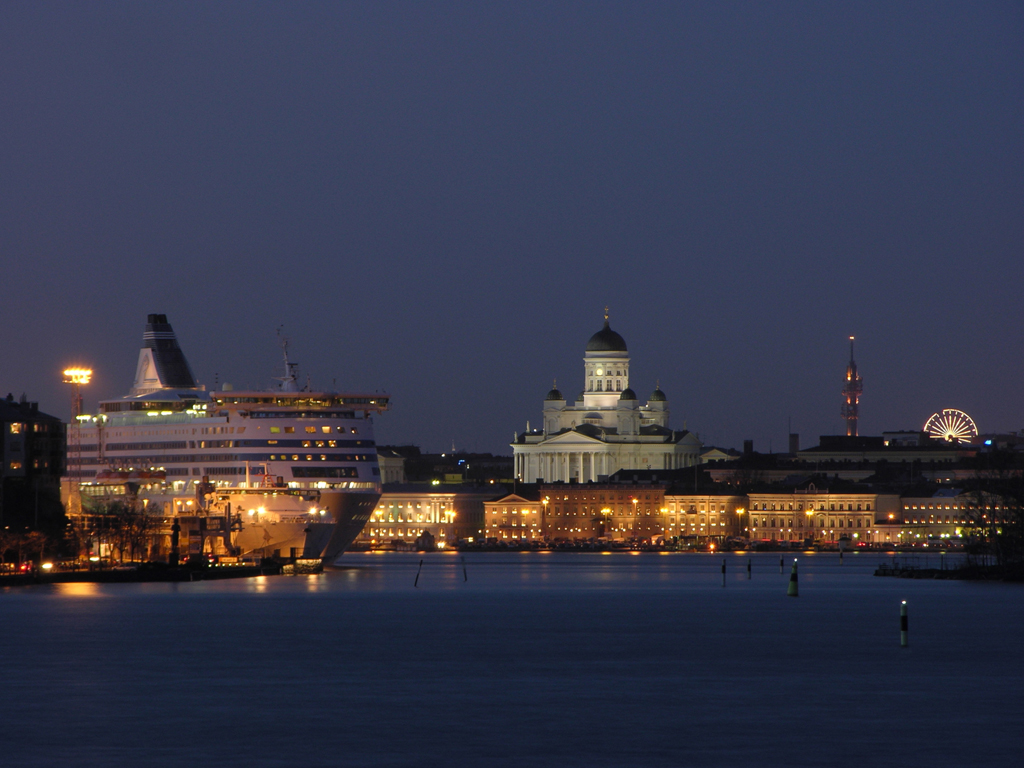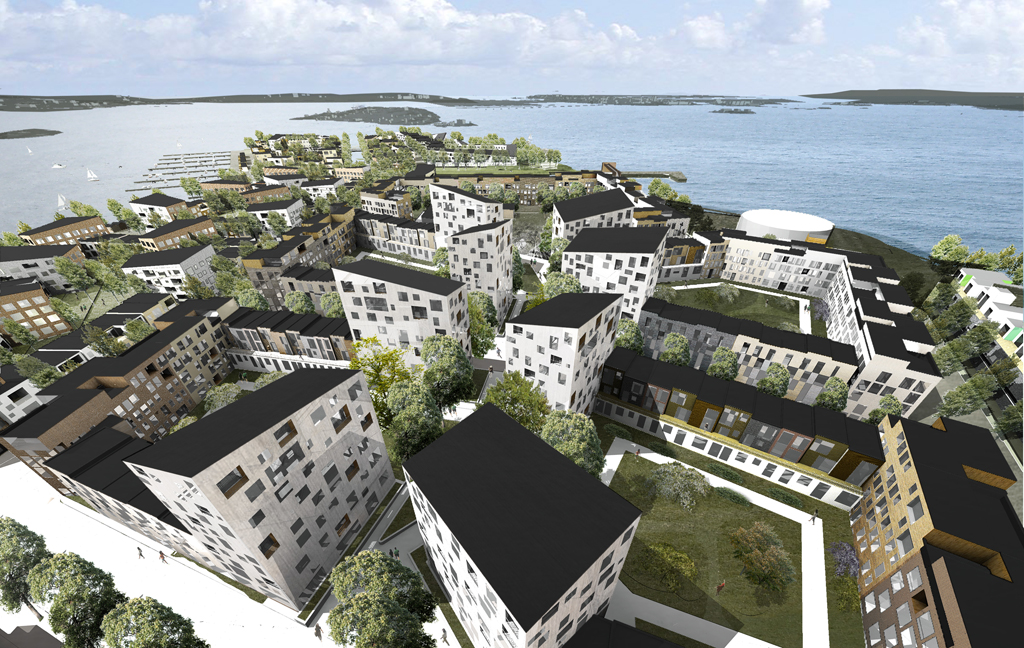Major transformation of the urban structure
In the latter half of the 1900s and early 2000s, the key issue in the history of urban development in Europe has been the gradual disappearance of industrial cities. In the late 1950s, Helsinki was still Finland’s foremost industrial city. The South Harbour (Eteläsatama), in the immediate vicinity of the city’s historical centre, was home to the nation’s largest import cargo harbour until the late 1970s. Likewise, other waterfront areas in Helsinki have not offered desirable living environments. A damp, cold and raw maritime climate has deterred residents from settling in waterfront sites. In addition, water quality has been poor until wastewater treatment became more efficient. Until a major transformation began in the 1980s, the waterfront was largely the territory of industry, storage, ports, energy supply and transport.
 South Harbour in 1893. ( © City Museum/ D. Nyblin, 1983 )
South Harbour in 1893. ( © City Museum/ D. Nyblin, 1983 )
Early 1980s saw takeover of waterfronts for housing purposes
In the early 1980s, the City gave serious consideration to converting the waterfront areas, overtaken by industry and ports, for housing purposes. A waterfront land use report drawn up by the City considered the future of waterfront areas, new land use and its economic impacts. This report, the first step in the rapid emergence of maritime housing, formed the starting point for waterfront projects in the inner city. The 1992 master plan formulated the results of the waterfront land use report into a target for municipal land use planning. The areas released from industry and the related activities were often significant in terms of land area, situated in a key location in the urban structure. Since most waterfront areas were land owned by the city, exceptional possibilities opened up for long-term urban development. The first waterfront construction projects included Merihaka, built as early as the 1970s in Sörnäinen, and the former dock and port area of Katajanokka, completed in the 1980s. More efficient exploitation of industrial areas’ potential for diverse urban development purposes was made in the 1990s, as the growth of Helsinki’s population resumed. Original maritime districts built in the past two decades and attracting international interest include Ruoholahti, Pikku-Huopalahti, Arabianranta, Herttoniemenranta and Vuosaari.
 Touringmap, year 1952. ( © City of Helsinki )
Touringmap, year 1952. ( © City of Helsinki )
Waterfront projects
Waterfront development projects in progress in Helsinki. Jätkäsaari, Telakkaranta and Hernesaari districts, seen at the front, are part of the Länsisatama (West Harbour) district development project that began in the 1980s. Ruoholahti, the first stage of the project, is already complete. In 2008 the cargo harbour moved to Vuosaari, seen in the background.
 Waterfront development projects in progress in Helsinki. Jätkäsaari, Telakkaranta and Hernesaari districts, seen at the front, are part of the Länsisatama (West Harbour) district development project that began in the 1980s. Ruoholahti, the first stage of the project, is already complete. In 2008 the cargo harbour moved to Vuosaari, seen in the background.
Waterfront development projects in progress in Helsinki. Jätkäsaari, Telakkaranta and Hernesaari districts, seen at the front, are part of the Länsisatama (West Harbour) district development project that began in the 1980s. Ruoholahti, the first stage of the project, is already complete. In 2008 the cargo harbour moved to Vuosaari, seen in the background.
Cargo harbours leaving the city centre triggered the urban reform of the century
Completion of the new cargo harbour in Vuosaari at the end of 2008 led to the vacating of the large cargo harbour areas of Länsisatama and Sörnäinen, closely flanking either side of the city centre, for urban development. At the same time, the Laajasalo oil docks, visible from the city centre across the bay, were demolished. In the coming decades, the city will face the massive task, crucial to the urban structure, of planning and constructing new areas for use by all city residents. The urban development projects of Länsisatama, Kalasatama and Kruunuvuorenranta have been established for the purpose of constructing these areas. Their development will create a total of some 20 kilometres of new public shoreline in Helsinki, providing housing for almost 50,000 Helsinki residents, alongside almost 20,000 workplaces.
Construction of waterfronts poses major technical challenges
Construction of waterfront areas has required massive landfill projects, the cleanup of contaminated soil, and even technical innovations. Construction on soft soil was developed in Pikku-Huopalahti, based on precompression and vertical drainage, while at Arabianranta, a shoreline area of deep soft soil was rendered fit for construction by reinforcing it with a honeycomb element structure based on lime pillar technology. A new kind of innovation was realised at the Salmisaari power plant area, where a 300 000 m3 overground coal storage was placed in rock silos, thus vacating land for plots to house 100,000 floor square metres of offices. The power plant remains in use. Another innovation is required at Hanasaari, a power plant area in the city centre. Helsingin Energia, an energy company owned by the City of Helsinki, is planning carbon-dioxide free energy production by 2050. A probable partial solution for the purpose is to terminate the use of the current power plant and to build a modern multi-fuel power plant adjacent to the present one in Vuosaari and next to the new harbour. This would vacate more central waterfront areas for urban development. The area in question forms part of the Kalasatama urban development project.
Harbour is integral to the City’s attraction and a major operational challenge
Cargo harbours have now moved away from the heart of the city, but the preservation and development of passenger terminals in the city centre is a key element in the city’s attractiveness. Passenger terminals include South Harbour (Eteläsatama) in the very heart of the city, and West Terminal (Länsiterminaali) in the West Harbour project area. A central location is key for passenger terminals, as they bring visiting ship passengers right into the heart of the city centre, where services and sights are concentrated, while being easily accessible to those departing from the city. The West Terminal is being developed as part of the West Harbour project area, and the South Harbour as part of urban development in the city centre. The ‘South Harbour open international ideas competition’ was recently concluded, with the aim of finding new solutions for the development of the area. This competition sought ideas for improving operational efficiency in harbour areas and better integrating them into the city centre’s urban structure. Transport solutions pose a major challenge to the development of passenger harbours, because passenger ships carry an increasing number of large lorries that need access to the main road network. This is problematic and requires massive investment.
 South Harbour: Helsinki by sea. ( © City of Helsinki )
South Harbour: Helsinki by sea. ( © City of Helsinki )
Development of a maritime Helsinki
In the next 20 to 30 years, Helsinki’s waterfront areas will be constructed into integral elements of this ever more densely built city. However, these areas are only one element of maritime Helsinki. The other side of Helsinki’s cityscape, and the mental landscape of Helsinki residents, is represented by the sea itself and the archipelago. As an area, the archipelago is an approximately 20 kilometre-long strip parallel to the shoreline, extending 10 kilometres out to sea. It has been calculated that the Helsinki area includes a total of around 300 islands. Most islands off Helsinki are owned by the state which, bar a few exceptions, has assigned them for use by the Defence Forces. The City of Helsinki is another major owner of islands. Alongside the development of waterfront areas, and as part of maritime Helsinki, the city intends to develop the archipelago for use by citizens.
 Two visualizations of Kruunuvuorenranta. ( © City of Helsinki, City Planning Department )
Two visualizations of Kruunuvuorenranta. ( © City of Helsinki, City Planning Department )
